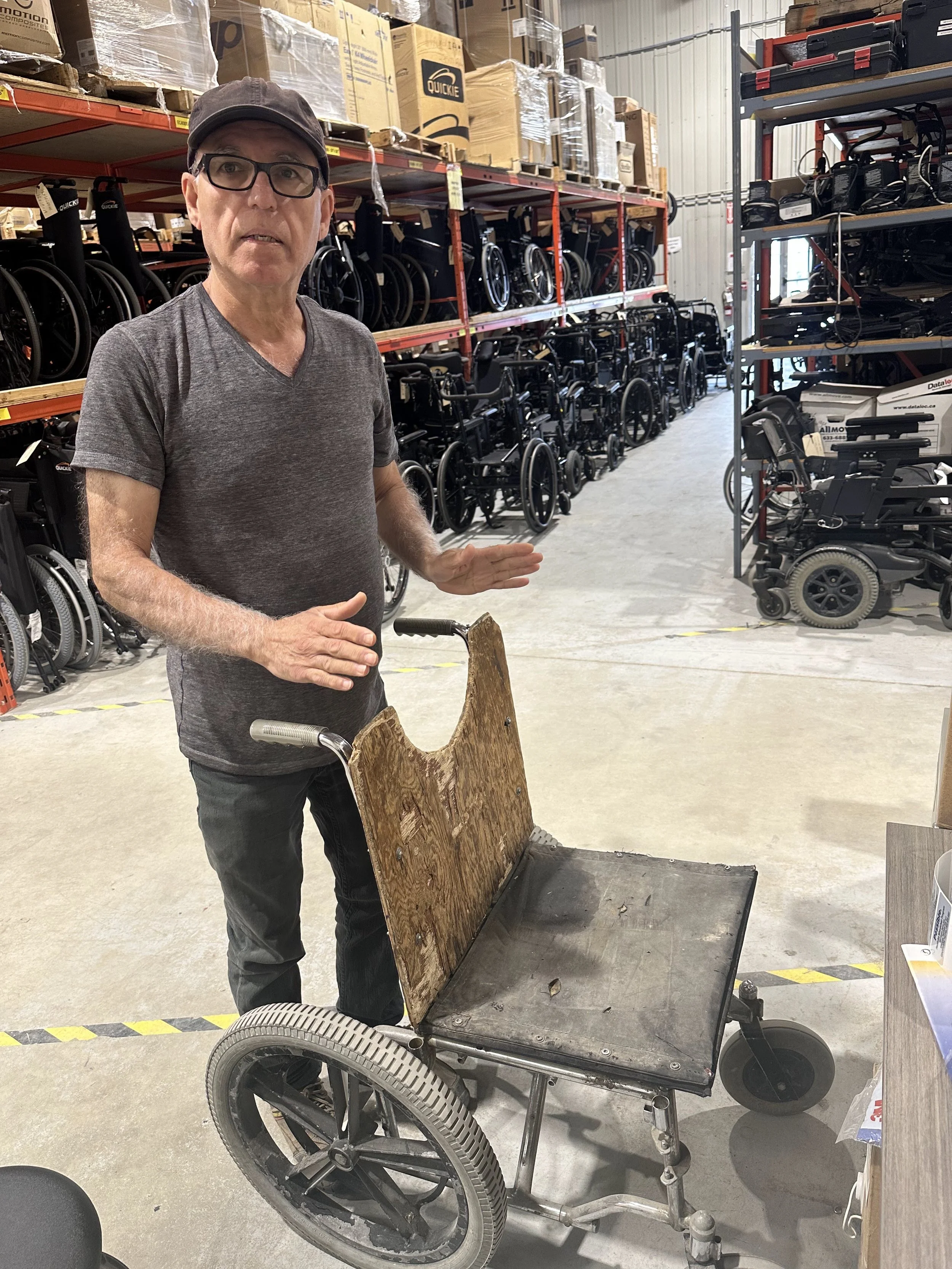Evolution of the Power Wheelchair
The evolution of the power wheelchair is a story of advocacy and innovation, shaped by Canadian disability advocates and engineers.
As Manitoba Possible celebrates 75 years, we're reflecting on some of the milestones in power wheelchair technology, transformation of our own wheelchair program, and the people who made it all happen. From early advocates and engineers to dedicated team members like Mo, who has spent nearly 30 years as an electronic technician at Manitoba Possible.
1940s: Women Lead the Way
In the 1940s, a small group of women in Winnipeg established the Wheelchair Centre. The goal was to provide training and employment for women with disabilities when few formal services existed.
1950s–1970s: Invention and Expansion
In the 1950s, the province started an official wheelchair program. The work began in our Industrial Workshop. A 1962 newsletter, discovered in a time capsule at our 825 Sherbrook offices, noted that “an average of 30 wheelchairs are checked and repaired each month. Repairs range from a complete overhauling to mending upholstery, designing special cushions or making a special arm.”
A 1950s photo of the Industrial Workshop, where wheelchairs were repaired.
Meanwhile, a Canadian inventor was helping transforming the future of mobility.
After World War II, many veterans were returning home with spinal cord injuries. The discovery and refinement of penicillin dramatically reduced the number of fatalities from wartime spinal cord injuries. One of those surviving veterans, John Counsell, recognized that more was needed than basic manual wheelchairs and his advocacy led to engineer George Klein creating the first mass-produced electric wheelchair. Klein's design included key features still used today: a joystick, individual wheel drives, and a tighter turning radius.
1980s–1990s: Power Wheelchairs go Mainstream
In 1980, Manitoban, Tom Landy, became one of the youngest children in Canada to receive a power wheelchair at the age of four (you can read Tom's Explore Possible blog post the critical importance of timely access to mobility).
In 1985, the wheelchair program started to include repairs to motorized wheelchairs. The Industrial Workshop evolved to a more equitable, community-based model. A formal wheelchair services program was created to take on the work of repairs, maintenance and distribution of both power and manual wheelchairs for Manitobans.
One of those early electronic technicians was Mo, who joined Manitoba Possible (then Society for Manitobans for Disabilities) in 1997 and has spent nearly three decades repairing and maintaining power wheelchairs.
Electronic Technician, Mo shows an old model of a power wheelchair at Manitoba Possible’s Wheelchair Services.
“Overall, technology is much better than it was before. The work has also become more complex,” Mo says. “Before, it was simple. Replacing an armrest took two, maybe three minutes. Now, it takes 20 to 30.”
Components like memory foam and tilt—once rare—have became standard.
“I remember a long time ago someone asking for a tilt. It couldn’t be found. And now it’s common. Most chairs have that technology,” he explains.
Today’s power wheelchairs are more adaptable, customizable, and user-focused. Specialty controls such as sip-and-puff or head-controls are available with power dynamic positioning actuators such as power tilt and recline.
Technology Matters; So Does Access
In 2024, with $1.2-million in provincial funding, we expanded access to in-home wheelchair repairs for rural wheelchair users in 135 communities. Until now, many rural users faced long wait times and limited repair options.
From Canadian inventors to front-line teams, and from advocacy from the disability community, the power wheelchair has evolved through decades of collaboration and innovation. As we mark 75 years in Manitoba, we celebrate those who have made it possible, and reaffirm the critical need for timely and equitable access going forward.


